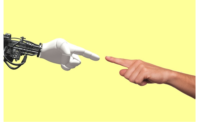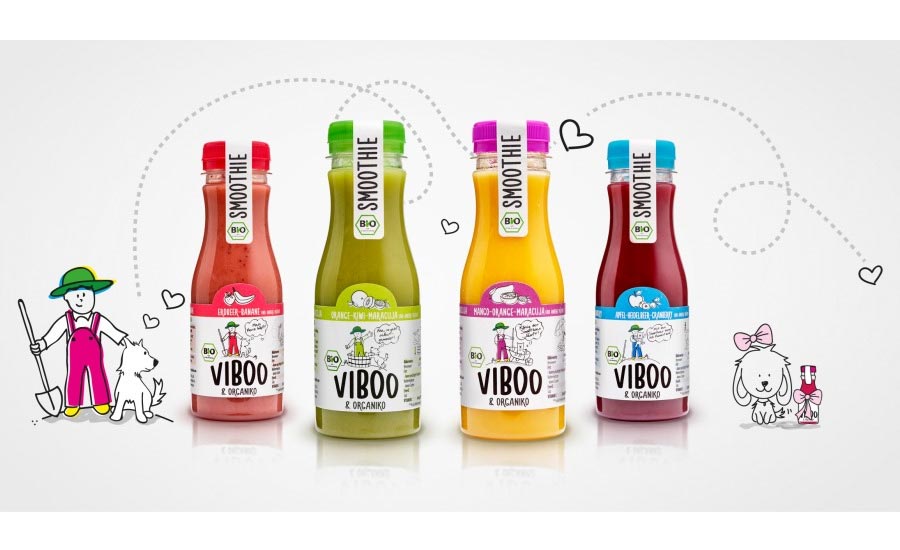Designing for Millennials






Like most of you, I’ve read many articles about millennials, each one describing how this generation differs from previous ones. Being the first generation to be brought up in an environment that promotes “instant gratification” through technology, millennials (born 1980-2000) experienced internet, cell phones and digital communication as the norm. While this was perhaps not so much the case for '80s children, by the early '90s children growing up could communicate, explore and learn like no other generation before them. Being a late-'80s child myself, I still remember playing with Lego, the first-ever color cell phone and the problems of slow dial-up internet. Looking back, these memories seem ancient—from a time that seems almost incomprehensible compared to the technology and connectivity we have available now.
However, of all the changes millennials experienced, the one with the greatest impact was the advent of the internet. Opening this, and future generations, up to the world like nothing before, research indicates that the millennials will constitute the largest online audience and have more buying power than any other generation that has come before it, including baby boomers. To put it into perspective, millennials today account for approximately 25% of the U.S. population and possess an annual purchasing power of $1.3 trillion. With such high spending power and as adopters of the latest technology and the first highly tech savvy generation, it is accepted that successfully targeting millennials will be a core survival factor for many brands over the next five years. As an experienced consumer psychologist, I have seen the importance of this firsthand— a failure to adapt can cause irreversible price wars, significant loss of brand equity and a total lack of brand loyalty. However, based on my observations, perhaps the most interesting changes from previous generations are the power dynamics between retailer and consumer and the importance of value drivers.
Consider the power dynamic first; the traditional model of the retailer having more power than the consumer has been diminished. Being so well-connected means that a millennial knows that if a product is inferior, the service bad or if the brand does not live up to expectations, he or she will be able to find an alternative almost instantly, using social media to publicly criticize a brand equally as quickly. As such, millennials are estimated to be as much as 70-80% less loyal to brands than previous generations, which makes targeting them less about on-shelf presence and more about global, digital, and social presence. This essentially means that a product needs to be on trend globally (as millennials are globally connected), digitally accessible and unique compared to other products (as millennials increasingly shop online) and socially sexy (have an ‘Instagram appeal’ that offers the purchaser social status). Due to the increasing importance of these factors, and prices between products, brands and retailers being ever undifferentiable, creating a unique brand that targets the core beliefs and behaviors of millennials is vital. To do so this requires first understanding their core beliefs and then designing a brand around them. Much like family values, tradition and community are important to baby boomers, I shall now discuss what we as branding experts need to consider when targeting millennials.
The Millennial Way (Understanding what they want)
1. Instant gratification is the norm
Millennials desire speed, ease and efficiency when it comes to seeking information, communicating with others or making a purchase. In fact, in almost all areas of their lives, whether it’s ordering food, receiving messages or making a decision, the need for convenience is a super powerful factor. The millennial is therefore accustomed to expecting immediate results. Current research shows that if this consumer type doesn’t have their question answered within minutes of asking, more than half will walk away from their purchases on the spot.
What to Do: Make sure that the brand immediately fulfills a need by making its USPs clear and easy to understand. Minimalism is key - complex packaging is difficult to process and requires higher engagement that hinders purchasing.
2. Personal connections are influential
Unlike other generations, millennials want products to match their fast-paced, connected world. It is just as important to present a comprehensive digital version of the product as it is to make something look beautiful in-store. A well-formatted digital version of the product (great photography, color spectrum and pixilation) allows retailers to show it off as intended but more importantly enables millennials to review and share it with friends. An emerging trend, especially for females in this demographic, is social buying - a form of purchasing that often requires a stamp of approval from friends or family first. Due to this multi-person evaluation process, it is equally important to ensure that while the product is easily accessible, it is also as transparent and authentic as possible. If not, informed and experienced consumers have the potential to destroy a brand at the click of a button with just a few simple words.
What to do: Communicate with these consumers—tell them more about the brand in a unique way and explain the decisions you make, e.g. use a mascot, brand symbolage or even fun email signatures to add originality. Moreover, use the mediums they know and love, and ensure your brands fit these. That means having a fun, compelling social media presence that is unique and differentiates itself from the competition. Differences can make or break your product, but showing how it can benefit a user can be the winning factor, regardless of cost.
3. Be Aware of Consumption Habits
Most retailers or brand owners engage in some form of consumer research, but only through the consistent use of comprehensive trend analytics will one successfully target this demographic. The reason for this is simple: being so digitally connected, these consumers change their brand, style and product preferences yearly. Alas, since millennial purchasing is based on social trends, understanding the DNA behind these trends is crucial if desiring to drive sales. While social trends can vary monthly or even daily, there are some underlying fundamentals behind ‘trendy’ brands. For instance, it’s evident that millennials prefer educational, engaging, and shareable visual content. Five out of six millennials in the U.S. connect with companies on social media networks and therefore connecting with them on social media like friends may help you reach a broader audience. In addition to shareability, you must optimize your content for the mobile experience. This means telling a compelling brand story, being genuine and interesting, keeping it visual and using a plethora of on trend design tactics.
What to do: Begin by making your brand sexy for social media. Look at similar brands available and model yours around these. The more popular a brand is, the more likely consumers of this type are to follow and engage with it. Combine this rudimentary research with more complex analysis available from tier one market research firms. The benefits will definitely outweigh the costs.
Building a Brand (Giving them what they need)
1. Tell a Story
Want to learn more about desinging for millennials?
Check out our Packaging and Millennials keyword page
In almost any decision context, whether it’s judicial or marketing, people like and remember stories. This is especially true for millennials, who experience the stories of people’s lives through social media on a daily basis. Indeed, telling stories has been a way to bring people together, inspire them and share knowledge since time began. Recent research supports the importance of good brand stories, finding that a brand, its USPs and even its font style and color scheme were accurately recalled in the context of an original story. This was found to be especially important for visual content, which was not only more appealing, but also more effective – in fact, it is shown to be 100% more effective than text.
What to do: Firstly, be genuine with your story. Millennials are informed and often research new products. In fact, only 6% of millennials in the US consider online advertising to be credible. They want to hear success stories from other buyers, not advertisements. Mediums used to convey information in the past, such as stock images for example, no longer work in the present. They are seen as clichéd and can actually downplay your brand’s credibility. Create original, visual content that focuses on “why” you’re selling your product or service, not “what” you’re selling. The best mediums to use include photographs, professional images, videos, infographics or memes. The popularity of this form of content is due to its easily digestible nature. This has led to images and videos receiving more likes, shares and comments on social media platforms.
2. Keep It Visual
Given that information is now readily accessible, millennials often overlook text dominant material. In fact, 41% of millennials struggle with information overload, as opposed to just 31% of baby boomers. In an online world with infinite amounts of text, offering clear visuals that stimulate and effectively communicate with millennials’ creative and visual minds can be a challenge. However, for both packaging and social streams, good quality photography is always a plus. Supporting this, market research has consistently found Instagram to have the highest level of brand engagement compared with all other social platforms. Using a combined approach of user-centered photos (i.e. real people using your products) and stunning product images creates a millennial focused brand.
What to do: Firstly, try prompting your brand’s social media followers to participate by encouraging them to take pictures of themselves engaging with your product. Successful brands will often take the highest-quality images that come from consumers and repost them on their page and/or offer prizes. Spreading your ideas across multiple pieces of content, not just one visual, helps reinforce the brand’s value over time. For example, why not showcase one fun fact about your brand each day? You can combine this concise information with complementary visuals and stunning packaging. Use a packaging design agency with experience in designing for this type of consumer. One good way to see the suitability of an agency is to look at or even ask about their design team. Teams with a good proportion of young (millennial) designers know exactly how to design for this consumer group.
3. Compelling via Design
Prior to telling your great brand story on social media, it’s important to get the brand logo and packaging right. After all, these two elements will strongly determine any follow-up content. Your packaging will need to stand out on a physical, as well as a virtual shelf.
Here are four design tips to create engaging packaging for millennials:
Minimalism is sexy: Millennials love minimalism, but today it goes far beyond the simple black and white designs of the past. Rather than limiting color palettes or fonts, millennial minimalism combines cleanliness with uncluttered layouts, effective use of white space and symmetry. Flat design is also one of the most popular trends within minimalism. It makes bold use of bright, contrasting colors and unique typography, along with texture and shadow. This trend can also be easily translated into your online platforms though the use of GIFs. GIFs can give your work a playful, cheeky touch, and they work well in animated designs.
Vibrant colors: For many years, designers favored muted colors as they experimented with new, minimalist design options. However, vibrant colors are making a comeback and graphic designers are using them to help their brands stand out. You can use contrasting colors to achieve maximum on shelf presence and to attract the attention of visitors to your online channels. You might even want to consider a rebrand if you think your logo could benefit from new color.
Unique typography: Whether it’s Avenir, Gotham or even Futura, millennials love their typography. Daring typography choices could be just what you need to get your packaging design and socials noticed by this audience. Different fonts can also give structure to your packaging and provide subtle cues to direct attention towards your product’s USPs. Among the best font foundries, Google Fonts has dramatically expanded the range of typographies available to designers. Over 800 are now available, mostly for free. We recommend utilizing such amazing tools to your benefit!
Analog is cool: Research shows millennials to be the most nostalgic generation in decades. This pining for the past has manifested itself in design with the growing popularity of retro styles, print-inspired designs and hand-drawn images. As we move ever further into the 21st century, millennials are increasingly choosing to engage with products and socials that also utilize designs based on older analog production methods. While it’s important to remember that analog is cool, you will need to find the right balance between this strategy and your brand values.
Millennials are a tricky generation to crack, but if you do so, the rewards are potentially massive. Among these, none is more prominent than free marketing for well-loved and popular brands. Getting your brand ‘on trend’ can honestly make or break it in today’s market and following these simple steps will help you get there! Remember though, it all starts with knowing who your target market is, and then developing a brand for them rather than adapting an existing one. If you must adapt, what’s wrong with keeping a brand name and doing a full redesign? Nothing! So, get moving! Trends last a maximum of a year or two, so get onto a redesign as soon as possible or you may delay connecting with millennials.
Looking for a reprint of this article?
From high-res PDFs to custom plaques, order your copy today!








